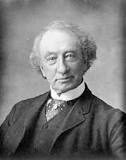The same European-introduced guns and horses that resulted in a briefly glorious golden age for them had also resulted in constant inter-tribal warfare and the rapid disappearance of the buffalo. Many tribes were literally starving by the 1880s. Another European introduction — smallpox — was simultaneously devastating entire communities. Corpses rotted in tents. Entire communities died a horrible death. At the same time this horror was playing out, American whiskey traders were killing the Indians the disease spared with their dreadful rotgut whiskey. The Indian population was in rapid decline.
Here’s how:
1. Smallpox: This disease, known as the “red death” was a major killer until Edward Jenner’s vaccine gradually eliminated it as a threat. However, it was particularly deadly for Indians, because they had no immunity to it. Vaccination programs were started early in Canada’s history to vaccinate Indian populations, but it was the government of Sir John A. Macdonald that initiated what was by far the most aggressive Indian vaccination policy. For understandable reasons, many Indians were very reluctant to have needles containing suspicious substances stuck into them. However, so determined was Macdonald to save the Indians from this awful disease he even resorted to threatening withholding treaty money from Indians who refused the needle. The Indians reluctantly finally accepted the jab, and smallpox permanently disappeared as a lethal threat to them. Macdonald can be accused of conducting an aggressive vaccination policy, but in this case, no one can reasonably argue that the ends didn’t justify the means.
2. Whiskey: The rotgut whiskey sold to the Plains Indians by American whiskey traders was literally killing them. Chiefs despaired as their people killed one another in their drunkenness. Macdonald saw what was happening and responded. He created the Northwest Mounted Police who chased the whiskey traders back across the border, and kept them there. Although liquor would remain a major problem for the Indians, the lethal threat was addressed. The Indian chiefs thanked the police, and John A specifically.
5. Education: Macdonald and the progressive Indian leaders of the time — some of whom were MacDonald’s close friends — were acutely aware education was key if young Indians were to be successful. Thus, providing education to Indian children was a treaty obligation demanded by the Indians chiefs, and gratefully granted by the federal government. The numbered treaties included provisions that schools would be built on reserves if requested, and all of the chiefs made that request.
However, sitting in schools was foreign to Indian culture and the schools were not providing the education that young indigenous people absolutely needed. So in 1883, Macdonald began the residential school program. A rather poor federal government would bear the significant expense of boarding and educating a select few of the indigenous children, who went on to become the leaders of their people. But Macdonald insisted from the outset attendance be purely voluntary. Only Indian parents who chose to send their children to a residential school would have their children admitted. No Indian parent was forced to send their children to any school during the entire time Macdonald held public office. (In fact, compulsory school attendance for status Indians at schools of any kind only became law in 1920, long after Macdonald was dead.) Perhaps the most startling fact is Macdonald was building schools for Indian parents who wanted them for their children, at the same time as the American cavalry was still shooting at American Indians. The last Sioux War ended only in 1890.
The fact words, like “savages” were in general usage at the time was not Macdonald’s fault. Judging yesterday’s people by today’s standards would disqualify all of our ancestors. Macdonald must be judged by the standard of his time. By those standards he remains, perhaps, the greatest Canadian.
They didn’t. In fact, the Plains Indians have thrived. Thanks in large part to Macdonald, the population of the Plains Indian has increased at least tenfold since his time.
Perhaps the voices now calling for MacDonald’s cancellation from our history books should give those books another look.
In fact, I suggest they might conclude that John A. did his best to be their friend.
Brian Giesbrecht, retired judge, is a Senior Fellow at the Frontier Centre for Public Policy



